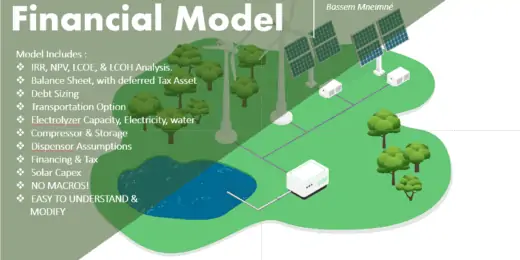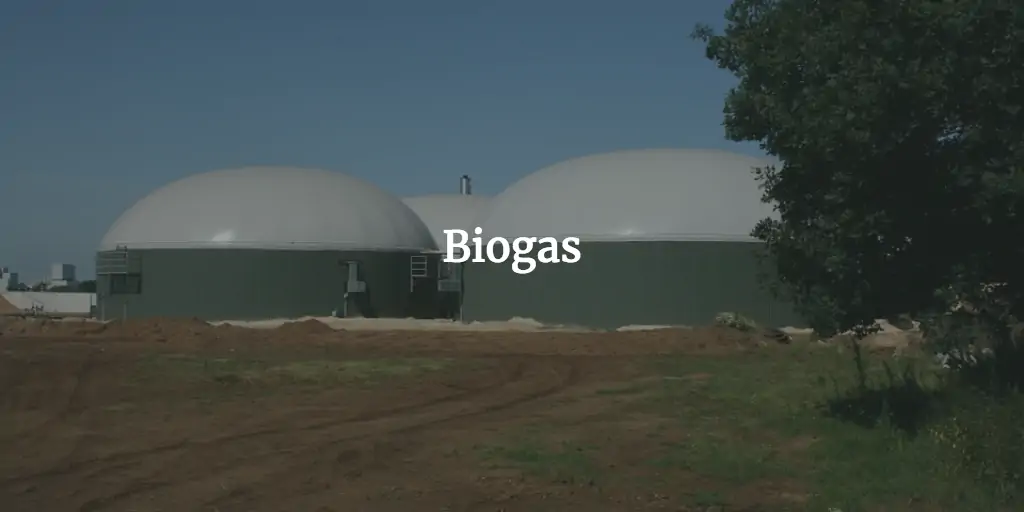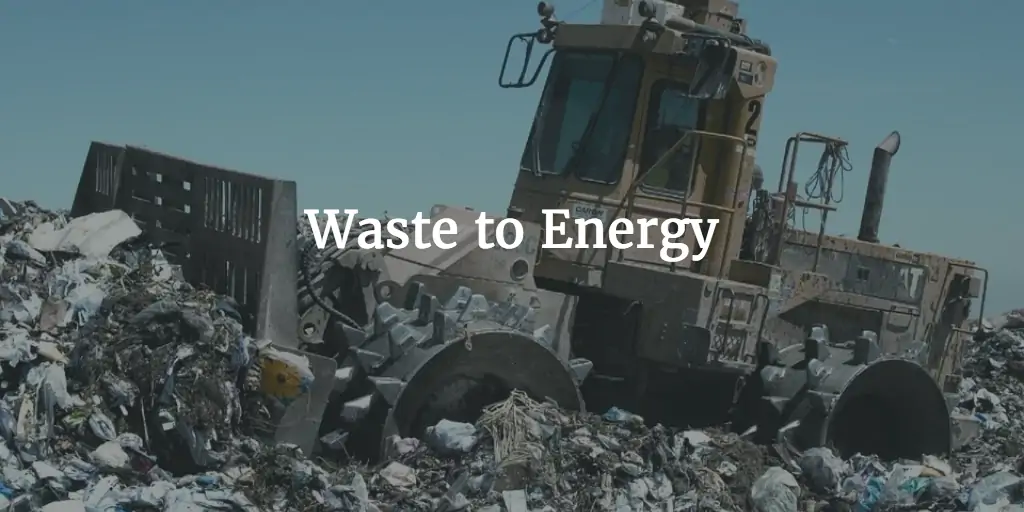A Step-By-Step Guide to Ammonia Plant Analysis
Prior threats to the world’s food security have existed throughout the 19th century. Many lands were depleted and deteriorated to provide enough food for the booming population. That was before Fritz Haber and Carl Bosch invented a method to combine ambient nitrogen and hydrogen to create ammonia.
Around 50% of food production today depends on fertilizer, and ammonia has been the base component of such fertilizer. As such, it helps put food on the table. Besides, it has other beneficial uses. Do you aim to power progress with a sustainable ammonia plant? Here’s a sample financial feasibility analysis to determine if an ammonia plant is worth the investment.
Facts About Ammonia
With the formula NH3, ammonia is a nitrogen and hydrogen inorganic chemical. Ammonia is the simplest pnictogen hydride and a stable binary hydride. It is a typical nitrogenous biological waste, especially for aquatic organisms. A colorless gas with a distinctively strong smell, ammonia is lighter than air due to its lower density (0.589 times that of air). It can be easily liquefied due to its strong hydrogen bond. It boils at 33.1 °C (27.58 °F) and crystallizes into colorless ice at 77.7 °C (107.86 °F).
The ammonia industry has unofficially established a color-coded system to identify the degree of carbon in the various ammonia production processes.
- Grey Ammonia: Also called brown ammonia, it is conventional ammonia. It has been produced through the Haber-Bosch process for 100 years now. A CO2-emitting steam reformation of methane is a common source of hydrogen. As such, it has the highest carbon emission.
- Blue Ammonia: Nitrogen is combined with “blue” hydrogen produced from natural gas feedstocks to create blue ammonia, with the carbon dioxide byproduct of hydrogen synthesis being recovered and stored. Blue ammonia has a lower climatic impact than gray ammonia because CO2 from its byproduct has been caught and stored.
- Green Ammonia: Green ammonia production is 100% carbon-free and renewable. It utilizes nitrogen extracted from the air and hydrogen produced through water electrolysis. These are then introduced into the Haber process (also known as the Haber-Bosch process), which is run entirely on renewable energy. In the Haber reaction, high temperatures and pressures combine hydrogen and nitrogen to create ammonia or NH3.
- Turquoise Ammonia: Turquoise ammonia is regarded in the industry as a color between green and blue. Methane is pyrolyzed into pure carbon and hydrogen, then combined with nitrogen to produce ammonia. The facility’s efficiency and the type of fuel utilized determine the precise carbon footprint of turquoise ammonia.
Green ammonia has gained significant attention and interest as a potential solution for decarbonizing the ammonia industry and enabling the use of ammonia as a clean energy source in various sectors, including transportation and power generation. It refers to ammonia produced using renewable energy sources, such as solar or wind power, instead of fossil fuels.
Uses of Ammonia
Ammonia (NH3) is a versatile compound with various applications across different industries and everyday life. Here are some popular uses of ammonia:
- Fertilizer: Ammonia is a vital ingredient in the production of nitrogen-based fertilizers. It provides a concentrated nitrogen source that helps promote healthy plant growth and enhance crop yields.
- Cleaning Products: Ammonia is an effective cleaning agent due to its ability to dissolve grease, oils, and other stubborn stains. It is commonly found in household cleaning products like glass, floor, and oven cleaners.
- Explosives: Ammonia is a key component in manufacturing explosives, such as ammonium nitrate, commonly used in mining, quarrying, and construction industries.
- Food and Beverage Industry: Ammonia plays a role in several areas of the food and beverage industry. It is used as a pH regulator, a leavening agent in baked goods, and a nitrogen source in yeast fermentation processes.
- Fuel Production: Ammonia can be used as a potential source of hydrogen for fuel cells or combustion engines. It can be converted into hydrogen gas, which has potential applications in the transportation and energy sectors.
- Metal Treatment: Ammonia is utilized in various metal treatment processes, such as pickling and galvanizing. Before further processing, it helps clean and prepare metal surfaces, such as plating or coating.
- Pharmaceuticals: Ammonia is utilized to produce various pharmaceuticals and medicinal products. It can be used as a precursor in the synthesis of certain drugs and as a pH regulator in pharmaceutical formulations.
- Refrigeration and Air Conditioning: Ammonia is widely used in industrial cooling, commercial refrigeration, and air conditioning systems. It has excellent thermodynamic properties and is more environmentally friendly than synthetic refrigerants.
- Textile Industry: Ammonia manufactures textiles, particularly in producing synthetic fibers like nylon. It is used as a chemical intermediate in the production process.
- Water Treatment: Ammonia is used in water treatment facilities to remove impurities such as chlorine, chloramines, and heavy metals. It acts as a reducing agent and helps maintain water quality and ensure safe drinking water.
The Global Supply of Ammonia
Before World War 1, ammonia was obtained through dry distillation of animal products and nitrogenous vegetables. During the 1890s, Adolph Frank and Nikodem Caro introduced nitrogen fixation to produce ammonia fertilizer. Then in the 1900s, German chemists: Fritz Haber and Carl Bosch converted atmospheric nitrogen to ammonia using a high-pressure device. It paved the way for commercial ammonia production and is now the main industrial procedure adopted by ammonia production plants.
Ammonia is the second most globally produced chemical. According to Statista, today’s world produces around 150 million metric tons of ammonia. With over 64.6 million metric tons produced, East Asia has the largest ammonia production. An estimated 42 million metric tons of ammonia were produced in China alone. The United States, the European Union, India, Russia, and the Middle East followed as the largest ammonia-producing countries.
The top 5 global ammonia producers are:
- CF Industries Holdings Inc. (US)
- BASF SE (Germany)
- CSBP Limited (Australia)
- EuroChem (Switzerland)
- Group DF (Ukraine)
The exothermic reaction between hydrogen and nitrogen produces ammonia. So, finding a hydrogen-generating process that is both commercially and environmentally feasible is the main problem for the manufacture of ammonia. Most ammonia facilities are located in regions with plentiful natural gas sources. Fortunately, the green ammonia production process is not subject to these limitations. It also avoids using carbon fuels subjected to geo-political risks.
The Rising Demand for Ammonia
The ammonia market was valued at USD 78.26 billion in 2022 and is anticipated to reach USD 129.63 billion by 2030, expanding at a CAGR of 6.51% from 2022 to 2030. As the demand for ammonia worldwide continues to rise, companies are looking at bigger and bigger factories to maximize economies of scale.

Several reasons contribute to the increasing demand for ammonia production:
- Agriculture: Ammonia is crucial in producing fertilizers, especially in ammonia-based fertilizers like ammonium nitrate and urea. The demand for ammonia-based fertilizers has increased with the growing global population and the need to enhance agricultural productivity to meet food demands.
- Energy Storage: Ammonia has the potential to be used as a form of energy storage, especially when produced using renewable energy sources. The ability to convert electricity generated from intermittent sources like wind and solar into ammonia and store it for later use provides a valuable energy storage solution.
- Environmental Concerns: As concerns over greenhouse gas emissions and climate change intensify, ammonia is being explored as a “green” or low-carbon alternative to conventional ammonia production methods. Green ammonia can be produced using renewable energy sources, such as wind, solar, or hydropower, and its demand is likely to increase as countries strive to reduce their carbon footprint.
- Hydrogen Carrier: Ammonia is considered a potential hydrogen carrier, offering a way to store and transport hydrogen efficiently. It can be used to deliver hydrogen to fuel cells or for energy storage applications, which has gained interest as the world seeks more sustainable and cleaner energy solutions.
- Industrial Applications: Ammonia is a building block for many industrial processes, such as producing various chemicals, synthetic fibers, and plastics. As industries continue to grow and diversify, the demand for ammonia as a feedstock or reactant has also increased.
Infrastructure and Investments: Investments in ammonia production facilities and infrastructure have been growing in response to the rising demand. It includes conventional ammonia production and the development of technologies for sustainable and green ammonia production.
The Cost of Ammonia
Like any commodity, the cost of ammonia is influenced by various factors, including supply and demand dynamics, production costs, global economic conditions, and regulatory policies. It is subject to market fluctuations, and these trends can change over time.
The cost of ammonia per ton on the market has risen to six times what it was at the end of 2020 over the past 18 months. The cost of ammonia per ton remained between $200 and $400 from March 2017 to roughly December 2020. However, the cost of ammonia per ton started to rise steadily, eventually reaching $1,300 by the beginning of 2022.
The primary cause of the price increase has been the steep rise in the cost of natural gas, which is utilized as an energy source to produce ammonia and is responsible for 70–80 percent of the cost of ammonia production. Fortunately, as natural gas becomes cheaper in 2023, the cost of ammonia per ton is expected to go down to $1,000 but still remains high.
Ammonia – The Future is Green
Investing in an ammonia production plant can be a capital-intensive and strategic decision. Yet still, the future of an ammonia plant is green because of green ammonia production from hydrogen. Most countries will be interested in investing in green ammonia projects because it has several environmental advantages.
Green ammonia production from hydrogen reduces the carbon footprint by eliminating or greatly reducing greenhouse gas emissions. It helps to decouple ammonia production from fossil fuel resources, making it a sustainable alternative. Besides, green ammonia can be stored, transported, and used as a carbon-free energy carrier or renewable hydrogen source, contributing to developing a carbon-neutral economy.
Green ammonia production from hydrogen is considered better than grey ammonia for several key reasons:
- Stable Market: The ammonia market has historically shown stability, with consistent demand and predictable pricing. As a result, investing in an ammonia production plant can provide a reliable revenue stream and long-term profitability.
- No Pollution: Green ammonia can be produced using renewable energy sources like solar or wind power or advanced carbon capture and utilization technologies. Investing in an environmentally friendly ammonia production plant can align with sustainability goals and contribute to the transition to a low-carbon economy.
- Local Production: Green ammonia projects only need water and renewable energy with some transport infrastructure. You can place such plants locally and practically anywhere. Grey ammonia, on the other hand, results from the high pressure and temperature interaction of nitrogen and hydrogen gases over a catalyst. This process uses a lot of energy and depends on substantial industrial infrastructure.
- Growing Demand: Green ammonia is a key ingredient in the production of fertilizers, and with the global population increasing, there is a rising demand for food. It drives the demand for fertilizers, increasing the demand for ammonia. Additionally, green ammonia has various industrial applications, including its use in producing chemicals, pharmaceuticals, and cleaning agents.
- Government Support: Governments often provide incentives and support for investments in the chemical and agriculture sectors relying on green energy., including ammonia production, through incentives, grants, or tax benefits. These incentives can reduce the initial investment costs and improve the project’s financial viability.
- Export Opportunities: Green ammonia is a globally traded commodity, and investing in a production plant can open up export opportunities. Many countries rely on imported green ammonia to meet their industrial and agricultural needs. By establishing green ammonia projects, you can tap into these international markets and potentially benefit from export revenues.
Despite the benefits of green ammonia, it is worth noting that grey ammonia production currently dominates the market due to its lower production costs. However, as renewable energy becomes more affordable and scalable, the transition to green ammonia is expected to accelerate. Developing and adopting green ammonia projects are crucial to achieving a sustainable and environmentally friendly future.
It is also important to note that investing in an ammonia production plant requires careful planning and consideration. Factors such as market dynamics, production costs, feedstock availability, regulatory requirements, and environmental impact should be thoroughly assessed before making an investment decision. Conducting a comprehensive feasibility study and market analysis is crucial to understanding an investment’s potential risks and rewards.
Financial Feasibility Analysis for Green Ammonia Plant
So, you’re really ambitious and want to build an ammonia plant? Before you dive in, you’ll need to determine if the project makes financial sense. Conducting a financial feasibility analysis is the best way to find out.
Step 1 – Estimate the Capital Expenditure Budget
Building a green ammonia plant is capital-intensive. You’re looking at several hundred million dollars. A green ammonia production plant’s current capital expenditure budget costs around $1,300 to $2,000 per ton. But the good news is costs are coming down. Estimating the total capital costs for your facility will require researching equipment, construction, and licensing fees.
You’ll need an electrolyzer stack, air separation unit, hydrogen compressor, ammonia converter, and more for equipment. Electrolyzer costs have dropped 80% since 2010 and continue declining. Shop multiple vendors to compare quotes. Construction costs include site preparation, foundations, buildings, storage tanks, piping, and infrastructure. These can vary significantly based on location and plant size. Expect to pay tens to hundreds of millions for a commercial-scale facility.
Licensing and permit fees must also be budgeted. Work with local authorities early on to determine requirements and timelines. The entire process can take 2-5 years and cost over $1 million for large plants. While the capital expenditure budget is still high, green ammonia is increasingly economically viable. By starting small and scaling up, you can spread costs over time. Partnering with equipment manufacturers, EPC contractors, and government agencies may help lower expenses through volume discounts, grants, and tax incentives.
Step 2 – Forecast Operational Costs and Expenses
The next step is to project the operating costs and expenses. Estimate costs over the lifetime of the plant, usually 20-30 years. Operating costs examples are raw materials, labor, maintenance, and utilities. They are the day-to-day costs of running an ammonia plant and can be significant in the financial feasibility analysis. Some of the major operating expenses you’ll need to account for include:
- Raw Materials: Natural gas is the biggest expense of producing hydrogen for ammonia synthesis. The primary raw materials are nitrogen, hydrogen, and methane, which comprise over 70% of total operating costs. Prices for natural gas and other fuels can fluctuate, so build some contingency into your forecasts.
- Energy Usage: Ammonia production requires an enormous amount of energy. Electricity and steam are major costs, so the efficiency of your equipment and processes will impact your bottom line. Newer plants tend to be more energy efficient.
- Environmental Compliance: Regulations around emissions, waste, safety, and pollution add to the cost of running an ammonia plant. Permits, testing, reporting, and control equipment must be properly funded.
- Labor: While ammonia plants are highly automated, you still need engineers, operators, maintenance staff, and administrators. Salaries and benefits for employees make up 10-15% of operating costs.
- Maintenance: Regular maintenance keeps equipment like compressors, heat exchangers, and reactors running smoothly and prevents unplanned shutdowns. Budget at least 5% of revenue for ongoing maintenance.
- Transportation and Distribution: After manufacturing, you must store, transport, and distribute the ammonia. Storage tanks, pipelines, railcars, and barges contribute to operating costs.
Accurately forecasting and benchmarking all of these costs is key to determining the financial viability of an ammonia plant over the long run. Carefully evaluating operating expenses during the planning stages helps avoid unexpected costs that could threaten profitability down the road. With strong management and optimization of resources, an ammonia plant can operate efficiently and affordably.
Step 3 – Calculate Revenues and Profits
Now that you know the costs of building and operating a green ammonia production plant, it’s time to determine the project’s financial viability. It is by calculating net operating profit after tax (NOPAT).
Why calculate the net operating profit after tax? After accounting for all operating expenses and taxes, NOPAT measures the plant’s operational efficiency and profitability. It helps assess the plant’s financial performance, identify areas for improvement, and compare it with industry benchmarks or other similar plants. When considering investments in an ammonia production plant, calculating NOPAT helps determine the potential return on investment. It allows investors or decision-makers to evaluate the plant’s profitability and assess its viability compared to alternative investment opportunities.
Ammonia prices depend on the market, but you can expect several hundred dollars per ton. The price you can sell the ammonia for will be your plant’s main source of profit. Ammonia prices fluctuate based on supply and demand, but in recent years have been around $500-600 per metric ton. Do some research on current and projected ammonia prices to estimate potential profit.
Calculate the plant’s annual ammonia production capacity in metric tons and multiply this by the estimated sales price. Subtract the forecasted operating costs and expenses to determine the total annual profit — factor in additional costs for any interest payments on construction loans or other financing fees and taxes.
You can determine the net operating profit after tax by multiplying the operating profit by (1 – Tax Rate). This figure represents the profit remaining after deducting taxes from the operating profit.
NOPAT = Operating Profit × (1 – Tax Rate)
Where:
Operating Profit is the profit generated from the business’s core operations before deducting taxes.
Tax Rate represents the applicable tax rate expressed as a decimal or percentage.
Your plant should be financially feasible if the net profit after tax is positive. A good target is an annual net profit of at least 10-15% of total revenue. However, it’s best to project net profit over at least 10-15 years to account for market changes and ensure long-term viability. Besides using a cost-benefit analysis worksheet, detailed financial analyses will help ensure your plant remains feasible even during downturns.
Step 4 – Cost-Benefit Analysis & Financial Ratios
Three groups are particularly interested in financial feasibility analysis – entrepreneurs, investors, and lenders. Financial feasibility analysis is critical in every business decision they make. Using a cost-benefit analysis worksheet helps them compare the costs incurred with the benefits gained in an investment, i.e., an ammonia production plant. Still, they need to determine if building an ammonia production plant is financially viable through financial ratios analysis of key metrics.
- Net Present Value (NPV): The NPV calculates the present value of the future cash flows from the plant minus the initial investment. If the NPV is positive, the project will be profitable. An ammonia plant’s NPV must be substantial to warrant the large capital investment required.
- Internal Rate of Return (IRR): The IRR is the discount rate that results in an NPV of zero for the project. It represents the growth rate you could expect from the investment. Look for an IRR higher than a typical market rate of return to account for the risk. An ammonia plant should have an IRR of at least 10-15% to be attractive.
- Return on Invested Capital (ROIC): The ROIC measures how well the plant generates cash flow relative to the capital invested. It is calculated as net income divided by invested capital. A good ROIC for an ammonia plant is 10% or higher. The higher the ROIC, the more value is generated from the investment.
- Levelized Cost of Ammonia – you can also mention this. We need to know what will be the costs at which a buyer can buy the ammonia from this plant => we need to calculate this and compare it to the levelized cost of other ammonia plants to be competitive.
By analyzing the NPV, IRR, and ROIC, you can determine if the rewards of building an ammonia production plant outweigh the substantial risks and required investment. The returns must be sizable and long-term for the level of capital needed. Run multiple scenarios with different assumptions to determine the sensitivity and viability of the project based on changing costs, ammonia prices, operating expenses, and so on.
The financial feasibility analysis depends on ensuring strong returns across various possible outcomes. If the numbers don’t add up, it may pay to revisit the plant design and look for ways to improve efficiency, increase production, source cheaper raw materials, or implement cost-saving technologies before abandoning the project altogether. With some creativity, an ammonia plant could become very profitable.
Consider using Green Ammonia from Renewable Energy Financial Model to perform a comprehensive evaluation of the potential risks & returns of a Green Ammonia Production Plant. The spreadsheet’s logical layout and explanation of how revenues and costs are calculated contribute to the model’s clarity and comprehension. Additionally, it gives investors information on the necessary estimated installed capacity, technical labels, and units of hydrogen and ammonia.

Summary
An ammonia production plant can be very profitable, but many factors determine its financial feasibility. The high capital costs, access to feedstock, market conditions, and operating costs are key considerations. Green ammonia projects may pencil out if there is local access to cheap natural gas and you can achieve high production levels with efficient processes. However, the margins are often tight, so you must carefully evaluate all cost and revenue inputs to determine if the investment risk is worthwhile. It comes down to balancing the initial cash outlay with the potential long-term payoff.
Before moving forward with an ammonia production plant, develop a comprehensive financial model with a full cost-benefit analysis. Look at best- and worst-case scenarios to determine if the rewards outweigh the risks for your company. The financial feasibility depends on your risk tolerance and how well you can control costs to generate acceptable returns in a volatile market. If done right, an ammonia plant can be a capital-intensive endeavor. If not, it may end up being an expensive lesson learned. So, do your homework and ensure the numbers add up on paper before investing time and money into an ammonia production facility.
Tags: financial planning


























































































